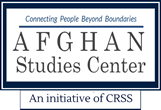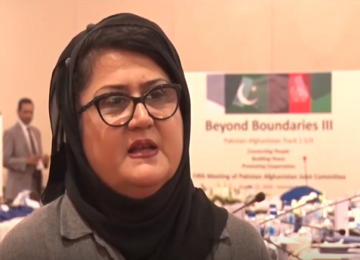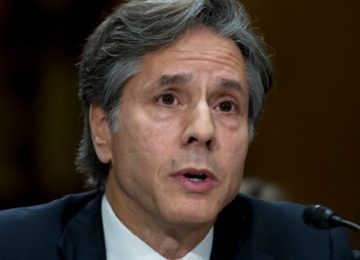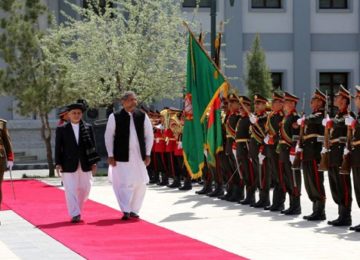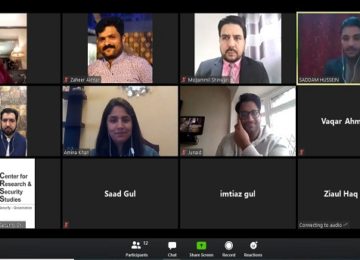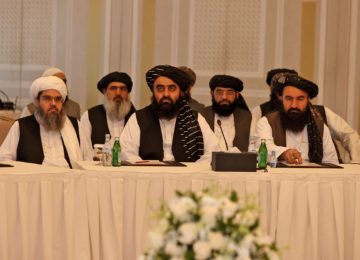The Independent Election Commission of Afghanistan (IEC) has announced 7 July 2018 as the date for the next parliamentary (and district councils) elections. It has started the preparations for the elections, but has been grappling with a lack of clarity about the budget and decisions about the use of technology in the elections. These issues have already dimmed the chance that elections can be held on schedule.
This is part two of a series of dispatches about the preparations for the next elections. Part one (read here) dealt with political aspects. The following parts will address more technical issues, and also the question of district council elections. In this part: the date, the budget and the back and forth concerning the use of election technology.
Setting the date for the elections
On 22 June 2017, the Independent Election Commission (IEC) announced that the next parliamentary and district council elections would be held on 16 Saratan 1397 (7 July 2018). These elections are long overdue. The term of the current Wolesi Jirga (the lower house of parliament) expired on 22 June 2015. According to the constitution, the elections should have been held 30 to 60 before the expiry date. (1)
This is the second time a date has been set for the elections. The first time, on 18 January 2016, the IEC (in its former composition – it has been changed since –, read about it here), after several attempts in 2015 – had announced the elections were to be held on 16 October 2016 (AAN’s previous reporting here). This date was not taken seriously by the government and donors, because most issues relating to electoral reform promised by the National Unity Government (NUG) leaders had remained unresolved.
By July 2018, the parliamentary election will have been more than three years overdue. The current Wolesi Jirga also will have served extra-constitutionally for more than three years.
One important issue to have stood in the way of holding the election is that the current president and chief executive, when they formed the NUG in September 2014, had agreed on the need for “fundamental changes” to the electoral laws and institutions with the objective to “implement electoral reform before the 2015 parliamentary elections” (full text of the agreement here). The reforms were delayed. It was only by November 2016 that a new electoral law was passed and members of both electoral commissions, the IEC and the Electoral Complaints Commission (ECC), were changed (see AAN’s previous reporting here; for an update on this see the postscript at the end of this text).
Both the government and the international community welcomed the announcement of the July 2018 election date. This included Chief Executive Abdullah Abdullah who, as the runner-up in the controversial 2014 presidential election, in particular, had advocated electoral reform. He welcomed it as “a step towards [fulfillment of] the [NUG]’s commitments and institutionalisation of democracy.” The United Nations Assistance Mission in Afghanistan (UNAMA), in its statement, even spoke of a “realistic date.” However, the IEC now operates with the assumption that the date is no longer achievable, as Wasima Badghisi, deputy and acting head of the IEC, said on a television debate on 20 November 2017 that there would be an election next year (2018), but with some flexibility about the date.
The budget and financing the elections
During the 22 June 2017 press conference, when the date was announced, (former) IEC chairman Najibullah Ahmadzai (who has been fired since, see AAN’s previous analysis here) said that the IEC had been assured of the election budget and security. According to the IEC, an estimated 210 million dollars is required for holding parliamentary and district council elections. On 14 November 2017, the head of the IEC secretariat, Imam Muhammad Warimach, told AAN that the amount also included the budget for the cost of election technology (more on the debate about election technology below). A deputy spokesman for the president, Najibullah Azad, told the BBC that 40 million dollars were already available in the Ministry of Finance, and the remaining amount would need to be provided by foreign donors.
Afghanistan itself lacks the financial ability to finance a mammoth operation, such as elections, and thus has heavily relied on international donors for funding ever since the first electoral cycle in 2004/05. On 3 October 2017, the IEC, the ECC and UNAMA signed an election project document, which is “providing the legal and financial framework allowing the UN and donors to support and strengthen Afghanistan’s electoral institutions and operations.” However, Warimach told AAN on 14 November 2017 that the IEC had not yet received any budget and only a few million dollars had been paid to the UNDP which only covers their internal expenses. UNDP has been administering the Enhancing Legal and Electoral Capacity for Tomorrow (ELECT) Project, which manages the election budget provided by donors (see more about the project’s phases and name changes in footnote (2)). Warimach further said that the donors told them that they had only 100 million dollars for both the parliamentary and presidential elections. This falls short of the IEC estimation of 210 million dollars required for the parliamentary and district council elections alone. This clearly indicates that there is no common understanding between the IEC and donors about the budget to finance the elections.
The debate about the use of technology
What are the concerns?
The NUG leaders and the IEC are keen to use modern technology solutions in the next elections – particularly biometric technology for voter registration. However, these solutions have already caused delays. Moreover, the IEC, the government and the international donors have been at odds as to what type and scope of technology would, in practice, improve the quality of the coming elections. Discussions have considered full or partial use of biometric voter registration (BVR) and voter verification (BVV), and electronic machines for voting, counting and result transmission.
The idea to introduce digital technology in the next parliamentary election arose first in early March 2017. The president, as its main advocate, pushed for it during several meetings with the IEC and ECC members, ambassadors and donor representatives. He argued that the use of such technology in future elections would “ensure [their] transparency.” (see here) In another meeting, the president complained that a similar 2002 proposal had met with “excuses,” and blamed donor reluctance for missing this opportunity. (This was as a result of a mix of reasons: Although the international community shouldered most of the budgets for the elections in 2004 and 2005, there was a reluctance to further increase the costs by introducing technology in later elections. In the initial post-Taleban years, there also were severe infrastructural hurdles – which still have not been overcome.) IEC officials and the NUG authorities have followed the president’s line and have been insisting since on the introduction of such technology.
However, many Afghan politicians and observers continued to question this obsession with technology. They expressed the following observations:
First, questioning the feasibility of introducing elections technology, for instance, Fazl Ahmad Manawi, a former head of the IEC and close ally of the chief executive, on 26 April 2017, called the use of technology in elections “under the current circumstance” a “political gamble” and “unfeasible” (see here).
Second, they have argued that technology alone could not be a suitable remedy for problems that are primarily political (see AAN’s previous reporting here and here) and that even the most modern technology could be manipulated, especially by the government, according to political opposition groups. For example, on 4 April 2017, Anwar-ul Haq Ahadi, the head of the opposition New National Front of Afghanistan, expressed concern that the new technology could be “misused even more hugely” and that he did not have “any doubt that the government [will use] this technology in its own favour, too.” (see here) The concerns about possible manipulation were also echoed by Muhammad Yusuf Rashid, the executive director of the Free and Fair Elections Foundation of Afghanistan (FEFA), who said on 26 April 2017 on TV that it was necessary “to inform the people”, so they know that it would not be “a controlled technology” and “is directly controlled, overseen by the IEC and they are accountable.”
Third, Afghan observers have pointed to the lack of consensus and institutional capacity as problems for adopting technological solutions. Rashid, for instance, mentioned during his April TV discussion that his organisation had held a conference on that day, “in which there was no agreement between the IEC and the ECC” and also among the political parties present. Moreover, Rashid said that, so far, the “whole capacity” of the IEC had been reliant upon a manual system, and the introduction of technology would need “time-consuming” capacity development.
Concerns have also been raised about potential providers of such technology. (3) Smart Matic reportedly gave a presentation in the Palace and to the IEC on 4 March 2017 when it appears it was the only competitor.
The feasibility study rejects the use of technology
As a result of these discussions, the international community agreed to fund the desired technology only if a feasibility study were conducted. Some local stakeholders interpreted the demand for this study as though the donors wanted to deny Afghans modern voting technology, because they deemed the country too backward. For example, IEC spokesman Gula Jan Badi Sayyad, on 26 April 2017, said during a TV discussion “if [that technology] is not feasible in Afghanistan, how come the [international donor countries] themselves use [such] technology? Afghanistan is not on another planet […].” He said that Afghans were very adaptive to new technology.
A Feasibility Study Team was appointed in March (4) and issued its final report on 17 April 2017 (which AAN has seen) that concluded: First, it was unfeasible “to introduce new digital election technology for an election in November 2017” – the target date given by the government. Second, it strongly recommended shelving the idea of electronic voting until after the next parliamentary elections and recommended: only a partial use of technology “[w]ith a longer time horizon, including a potential election day in spring 2018 or later,” which included “biometric voter registration, biometric voter verification, and electronic result processing.” Third, the report suggested: “biometric registration in some areas” could be still complemented with “other, simpler measures”, in order not to disenfranchise those “citizens that cannot be reached as part of the initial biometric registration drive.” The Feasibility Study Team also referred to “new legal requirements for assigning voters to polling centres, and the poor state of the existing register”, which results from article six of the new electoral law; this article is about voter registration, calls for the registration of all eligible voters in a voters list and obliges the voters to vote at the same polling centres where they are originally registered. (5) These requirements, the team concluded, necessitated “a new, credible voter register”, which it said was “a priority area for the use of technology.”
The report provided “basic estimations” about the timeframe for “a biometric voter registration exercise”, which it said would take “at least nine months to a year from decisionmaking [sic]: 3 months for specification and tendering for equipment; 3 months for production of equipment, shipment to country; 2 – 4 months for registration exercise, depending on operational plan; 1 month duplication and voter list production.” It said that the estimation was “a best-case scenario” and that delays should be “expected and adequate time buffers need to be included in the final operational plan.”
The findings of the Feasibility Study Team corresponded with the recommendations by the Special Electoral Reform Commission (SERC) (which was appointed in 2015 to review the electoral laws and institutions and recommend electoral reforms as part of the NUG’s political agreement in December 2015 (see AAN’s previous reports here and here). After listing the advantages of using technology in electoral processes, such as helping to prevent duplication in voter registration, multiple voting and accelerating safe data transfer from polling centres to the IEC headquarters, the SERC recommended that “the government, considering all aspects related to this subject, such as the possibilities of procuring required machines and their maintenance, public awareness, training of election staff for launching electronic voting and the infrastructural possibilities of the country, conducts the voter registration process electronically and use of technology in other phases of elections be incorporated into mid-term and long-term programmes [our Italics].”
IEC decides for full use of technology
Contrary to the above recommendations, the IEC announced that it had decided to use technology in all phases of elections, including voter registration, voter verification, voting, vote counting and result transmission. This happened during a consultative meeting with representatives of political parties and civil society organisations on 26 April 2017 (which was also attended by the author). Maleha Hassan, a member of the IEC, told the participants that the full use of technology “will be like a revolution in Afghanistan, […] we need to use technology.” She dismissed the recommendations of the Feasibility Study Team as having been only “conducted by three foreigners and one Afghan” who, she said “may not know well about Afghanistan” and might not have researched “properly.” She said that “the electoral law is the only basis for the IEC decisions,” despite the fact the law does not particularly prescribe anything about use of technology.
IEC secretary and spokesman Gula Jan Badi Sayyad also argued that the use of technology was about trust building. He said in “countries like Afghanistan, where there is a lack of trust, transparency and there is fraud” and where “people need to find something to ensure trust and prevent fraud” needed to use them. Similarly, on 2 May 2017, IEC secretariat head, Warimach, said in the Senate, “the commission, after reviewing the use of technology, has come to this conclusion that it has the capacity for full use of it and is going to hold the next parliamentary elections electronically.” Government officials (such as the second vice-president Sarwar Danesh, in a meeting with the UN Special Representative for Afghanistan on 1 May 2017) also continued to press for the use of technology.
This ambitious decision, to fully utilise technology, disregarded the recommendations based on technical studies conducted by SERC and Feasibility Study Team regarding what was feasible and practical which was: only biometric voter registration and verification for the next parliamentary elections.
The IEC fails to secure a successful procurement
Both the restricted tendering method and the procurement process were criticised by Afghan election observers. FEFA’s Rashid questioned why the restricted tendering method was used in the first place, despite the fact that the commission had enough time to use open tendering method) Sughra Sadat of Transparent Election Foundation of Afghanistan (TEFA) implied that, even this restricted tendering was not conducted transparently, when she told AAN on 12 September 2017 that “TEFA talked to a couple of the companies, including SmartMatic, that were requested to provide proposals for biometric machines. The two companies said that they were notified at the last minute when the deadline was about to close.”
The IEC under fire on 10 October 2017 announced in a press release that, based on the report of its evaluation committee, the offer submitted by the Prologix had fallen short of the set criteria and that, based on the procurement law and rules of procedure, the offer failed “to go to the detailed evaluation phase.” The IEC further declared that the offer by the company was “irresponsive [not fulfilling the functional criteria specified by the IEC in the request for proposal]” and referred it back to the NPC “for further processing”. This, in effect, meant a new tendering process is required.
Plan B: back to manual voter registration?
On 29 October 2017, Tolonews quoted IEC deputy head Wasima Badghisi as saying that, the paper-based elections for the next parliament seemed more feasible. Two days later, IEC spokesman Sayyad explained to AAN that the IEC was working on an alternative plan to conduct voter registration manually, should its “Plan A” for biometric voter registration encounter any problems. According to an electoral roadmap prepared by the IEC (AAN has seen a copy of it), if the BVR equipment is not available by October 2017 (which has not happened), it would affect the other steps in the process, given the approaching onset of winter. The previous IEC in its unrealistic plan for elections on the 16 October 2016 had set four months for the revalidation of existing cards and the registration of Afghans who, for some reason, needed new cards. A new voter registration would certainly take more time (see also this AAN’s previous dispatch here).
According to Sayyad, the NPC had not sent out a new request for proposal for BVR equipment as of 31 October 2017. This has now been forsaken as, on 22 November 2017, Maleha Hassan told AAN that there would not be any procurement process for biometric machines this time, as it would take time. This came after deputy head of the IEC for operations, Wasima Badghisi, also said on 20 November 2017 that their plan for biometric voter registration “was not supported sufficiently by international organisations and the government of Afghanistan and this might remain as a long-term plan and if we receive these supports, we may use it in 2019 presidential elections.” She further said that the discussion was to “make [only] partial use of electronic system in preparing voter lists, but its full use is a weak possibility.” In fact, blaming the international donors and the government about elections technology, the IEC has now started to implement its Plan B. This falls back on use of a paper-based system to register voters, but still link them to the polling centres registration. On 27 November, IEC spokesman Sayyad confirmed to AAN that the IEC had decided to conduct paper-based voter registration based on Tazkera and that the IEC had already signed a memorandum of understanding with Population Registration Department based on which it committed to issue tazkera to eligible voters so the IEC can use it to register voters. According to him, this also reduces the budget, but the IEC is still preparing an estimated budget plan in accordance with Plan B.
Conclusion
The IEC officially sticks to the 7 July 2018 date for the next parliamentary elections (we will discuss district council elections in a separate dispatch), but has already signalled flexibility. AAN has heard from various stakeholders that fall-back dates as late as October 2018 are being considered.
Despite the problems outlined here (and we will soon write about further aspects of necessary preparations), it appears that the IEC will keep struggling to still hold elections in 2018. One of the remaining shortcomings is that the Afghan government insists that it does not have the financial ability to finance elections alone and, thus, needs the support of the international donors. They have continued to be reluctant as they were concerned, not only about the feasibility of technological solutions, but also about their ownership, sustainability and credibility in Afghanistan. They also set conditions, such as: proper use of IEC and ECC assets (addressing questions about the assets taken by the former commissioners (see this media report about the IEC assets taken by the former IEC members); and, a proper budget and operational plan.
Much time was lost as a result of the president’s ambitious desire to introduce, not only biometric voter registration, but also electronic voting. Recommendations by a number of feasibility studies have been overruled, and an unsuccessful and problematic procurement process for this technology has added fuel to the fire. The IEC saw itself as being forced now to fall back on Plan B: to use a manual system for voter registration and to develop a more reliable voter list that, for the first time, ties each voter to a specific polling centre. This was a major demand of electoral reform, which has been enshrined in the electoral law. This also reduces the election budget. However, it remains to be seen whether this new manual voter registration can lay a solid foundation for improving the system that could be built upon by using biometric technology in the run-up to the next cycle of elections.
Postscript: The selection of a new IEC chairman
The sacking of the IEC chairman, Najibullah Ahmadzai, by the president on 15 November 2017 (see AAN’s previous report here has necessitated the selection of a new IEC commissioner to replace him. (The commissioners will elect the new chairman from amongst themselves.)
In this situation, according to the Electoral Law, President Ghani was supposed to appoint a new commissioner from amongst the 14 remaining candidates suggested by a selection committee in 2016 for the IEC within two weeks’ time. The IEC, in its new composition, would then elect a new chairman from among themselves. (7) However, he argued that none of the candidates were sufficiently qualified and, as a result, decreed that the former selection committee should reconvene (see its composition in footnote (8) and more about its previous work here).
Acting presidential spokesman Shah Hussain Murtazawi informed about this decree in a statement published on Facebook on 26 November. The decree came into force with immediate effect. Murtazawi’s statement also repeated the argument about the absence of an eligible candidate. Here AAN’s working translation from Dari:
Considering the importance of elections as a national process and the need for the competent and experienced individuals for better conduct of it [elections] and because an eligible person for membership of the Independent Election Commission could not be appointed from among the list of remaining candidates, the leadership of the National Unity Government has made a decision to issue a decree on the start of the Selection Committee’s work.
The president’s argument was read by many observers of the Afghan election process as a statement in favour of Abdullah Ahmadzai, currently the head of the country office of The Asia Foundation. His name has regularly emerged as a strong candidate for the job and whom key international stakeholders also support. Abdullah Ahmadzai served as the head of the IEC Secretariat for the 2010 parliamentary elections. These elections had been marred by serious shortcomings and followed by more than a year-long aftermath that was badly managed and controversial until finally results were accepted. AAN then concluded that this vote had been sacrificed “for a semblance of control”) (see here and more AAN analysis here). His name was not on the 2016 shortlist of 21 names submitted by the selection committee for the initial IEC.
This decision to reconvene the selection committee immediately created some opposition, including from among members of the committee. Yusuf Rashid, a member of the (former) selection committee argued, as reported by Afghan media that there was “no legal justification for the committee to resume its work.” This was echoed by the chairman of one of the Afghan election watchdog organisations, Jandad Spinghar from Election Watch Afghanistan (EWA), (9) as well as in a statement from The Election & Transparency Watch Organization of Afghanistan (ETWA) published on 26 November. ETWA even suggested that, in order to solve the issue of IEC succession, the Election Law should be amended “in consultation with political parties and civil society.” This would lead to a lengthy process, further extending the preparation period for the elections.
(1) Article 83 of the constitution sets out:
Members of the House of People shall be elected by the people through free, general, secret and direct balloting. The work period of the House of People shall terminate, after the disclosure of the results of the elections, on the 1st of Saratan of the fifth year and the new parliament shall commence work. The elections for members of the House of People shall be held 30-60 days prior to the expiration of the term of the House of People. The number of the members of the House of People shall be proportionate to the population of each constituency, not exceeding the maximum of two hundred fifty individuals. Electoral constituencies as well as other related issues shall be determined by the elections law. The elections law shall adopt measures to attain, through the electorate system, general and fair representation for all the people of the country, and proportionate to the population of every province, on average, at least two females shall be the elected members of the House of People from each province.
(2) The UNDP-ELECT, since its launch in 2016, has been “the preferred basket for donors to contribute to, both for UN support to the IEC and for its ongoing daily costs” (quoted from here). The ELECT project has served both as a main basket and vehicle for international financial support for the electoral processes and provider of international technical support to the electoral bodies. This continued until 2012 when it was replaced by UNDP-ELECT II, which provided direct support to the IEC, as well as ECC from 2012 to mid-2015. Since then, it has been replaced by the Transitional Support to Elections in Afghanistan Project Initiation Plan (PIP). PIP was intended “to bridge the period between the operational closure of the ELECT II project on 31 July 2015, and the signing of a new project document, defining the terms and modalities of future electoral support, to be implemented partnership with” NUG. Starting from January 2018, PIP would be replaced by United Nations Electoral Support Project (UNESP).
(3) On 18 April 2017, for instance, Jandad Spinghar, the head of Elections Watch Afghanistan (EWA) said on TV, “There is a company called Smart Matic which has come into this country in 2015 and has met the president, the chief executive, the leaders and us and everyone. I mean that the company is trying to do a type of marketing. It has been to the commissions for [trying to persuade them into] buying the technology.”
(4) The exact date of the appointment is not clear. Naem Ayubzada, the head of TEFA, who was a member of the team, in a conversation with AAN did not remember the exact date and said that it worked for one month. If true, it might have been established on 17 March.
The report also does not say anything about who ordered the feasibility study and says:
“In support of an Afghan-led and Afghan-owned electoral process, the IEC, the government and the international partners have agreed that an independent feasibility study should be conducted prior to the introduction of technology.”
Ayubzada told AAN that the Ministry of Finance had sent a letter to the IEC, which then coordinated the feasibility study.
According to the report, the Feasibility Study Team was composed of the following members:
- Mr. Peter Wolf (Austria): a technical manager with International Institute for Democracy and International Assistance (IDEA) with the expertise in elections, constitution-building, and ICTs in elections.
- Mr. Naeem Ayubzada (Afghanistan): the head of TEFA, a domestic election observer organization,which has observed 2009 presidential, 2010 parliamentary and 2014 presidential elections.
- Ms. Mareska Mantik (Indonesia): electoral capacity building specialist with experience of working with UNDP.
- Mr. Kåre Vollan (Norway): an international electoral expert assisting the Election Commission of Nepal on law issues and providing advice to the Constitutional Assembly members.
The report further said that “Technical staff of the IEC participated for technical support upon the request of the team and approval of the Vice Chairman – Operations who was directly in charge of the overall management and coordination of the study.”
(5) Article six of the electoral law says about registration and voting:
1 The person eligible to vote has to personally appear at the polling center, and register his/her name in the voters list based on the citizenship Tazkera or document specified by the Commission for verification of his/her identity.
2 No person can register his/her name more than once in the voters list.
3 The voter is obliged to vote at the poling center, where his/her name has already been registered in the voters list of that polling center.
4 To get a ballot paper, a voter is obliged to present the citizenship Tazkira (National ID) or a document which is determined by the Commission for proving his/her identity.
6 Every voter has the right of one vote and can use it directly in favor of his/her favorite candidate. (6) In case a voter may need guidance about finding his/her candidate of choice, he/she can seek help of a person he/she trusts.
(6) According to rule 21 of the rules of procurement procedure, an entity can “use the restricted tendering procurement method where; 1) the goods, works and services are only available from a limited number of bidders (maximum 5 references). 2) The use of open tendering is not practicable, due to unforeseeable and urgent circumstances or delays in procurement process because of dilatory, negligence or un-accurate planning of the Entity” (the Dari version of the procedure is available here. (Dari version here).
The IEC and NPC used the second justification for choosing the restricted tendering method.
(7) See paragraph 2 of Article 14 of this law. The whole article reads:
Conditions of Termination of the Member of the Commission
Article 16:
1 A member of the Commission can be terminated from job in the following circumstances:
1.1- Faking of the educational documents.
1.2- Deprivation of civil rights on the order of a competent court.
1.3- Conviction for committing crimes of misdemeanor or felony.
1.4- Having membership in political parties during membership of the Commission.
1.5- Breaching provisions of the Constitution of Afghanistan, this law and other laws enforced in the country.
1.6- Suffering from an incurable or long-lasting disease which impedes performance of duties.
1.7- Continuous absence from job for more than twenty days without justifiable legal reasons.
1.8- Non-observance of provisions of Article 17 of this law.
2 Member of the Commission may tender his/her resignation in written to the president.
3 In case of resignation, termination or death of one or more members of the Commission, the President, within seven days, shall appoint new member (s) from amongst the remaining candidates stipulated in paragraph (2) of the Article (14) of this law; with due consideration to the ethnic and gender composition.
4 In case the chairperson, deputy chairperson or secretary of the Commission lose their membership due to resignation, termination or death, new elections shall be conducted among the members of the Commission, in accordance with the paragraph (2) of the Article (11) of this law.
5 Except for the conditions mentioned in sections (1, 2 and 3) of the paragraph (1) of this article, determination of other conditions shall take place by the Commission.
Based on Article 16.3 of the same law, in the described case (or in the case of resignation or death of an IEC member) the president should appoint a new member from the list of the remaining candidates introduced by the selection committee. Article 16.4 says that if the dismissed (or resigned or deceased) member is also the chairman or deputy chairman or secretary of the IEC, there should be a new internal election in the IEC (see here).
(8) The selection committee comprises of the following members: Jawid Rashidi (Pashtun), a member of the Supreme Court, as chair; Yusuf Rashid (Pashtun), representing the election-related civil society organisations; Mary Akrami (Tajik), representing the women’s rights organisations; Muhammad Zia Langari (Sayyed), a member of AIHRC; and Abdullah Shafai (Hazara), a member of ICOIC.
(9) The article we cite Spinghar’s position from wrongly associates him with another organisation, FEFA.
By Special Arrangement with AAN. Original link.
Disclaimer: Views expressed on this blog are not necessarily endorsed or supported by the Center for Research and Security Studies, Islamabad.
